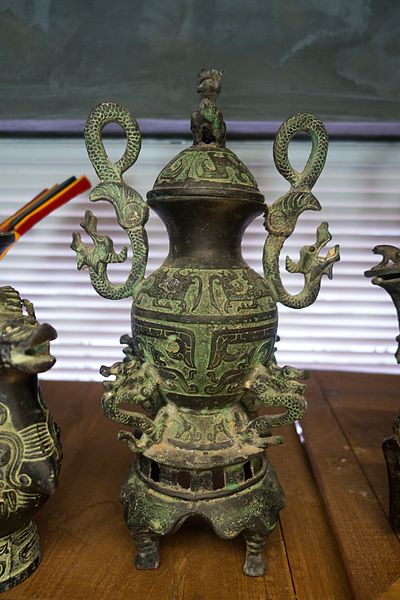
Thammasat University students interested in Chinese Buddhism, Malaysia, comparative religion, sociology, ASEAN studies, political science, history, and related subjects may find it useful to participate in a free 8 December Zoom webinar on Chinese Buddhist Transformations in Malaysia: Navigating Nation Building and Transethnic Dynamics.
The event, on Thursday, 8 December 2023 at 9am Bangkok time, is presented by ISEAS – Yusof Ishak Institute, Singapore.
The TU Library collection includes research about different aspects of Chinese Buddhism in Malaysia.
Students are invited to register at this link:
https://us06web.zoom.us/webinar/register/9317006274341/WN_1QFsvq3PTXuJXJtSnMSWow#/registration
The event webpage explains:
About the Webinar
This paper examines the evolution of Chinese Buddhism in Malaysia in the context of nation-building. Chinese Buddhist communities in Malaysia actively promote their cultural and social values for the multiracial nation. The interethnic and interreligious efforts of various Buddhist groups serve as strategic responses to the racial landscape of Malaysia, rooted in deeper spiritual convictions. Drawing on Wang Gungwu’s three types of Chinese orientation, this study demonstrates that the transformation of Buddhism is a manifestation of local nationalism, drawing inspiration and validation from religious doctrines. Buddhist communities dynamically challenge racialization, religious dogma, and societal biases, using their faith to bridge divides between Muslims and non-Muslims. The extent to which Chinese Buddhists can proactively address certain racialization dynamics in Malaysian society remains uncertain.
About the Speaker
Dr. Tan Lee Ooi is currently a researcher at the Penang Institute and columnist for Malaysian national newspaper Sinchew Daily.
The TU Library owns an example of published research by Dr. Tan Lee Ooi.

TU students may access his book Buddhist Revitalization and Chinese Religions in Malaysia through the TU Library Interlibrary Loan (ILL) service.
One reviewer of the book noted:
Buddhist Revitalization and Chinese Religions in Malaysia focuses on the background and the historical process of Buddhist revitalization in Malaysia. It analyzes the unique social, cultural, and political context inside and outside contemporary Malaysia within which the rationalization and transformation of Chinese Buddhism has occurred. The relations between Buddhism and the
Chinese communities as well as tensions between Buddhism and the Chinese religion (Chinese popular religion) have also been specially reflected on in the book. […]
Compared with previous studies, this book provides a broader view that includes dissecting the local and transnational factors associated with the process of Buddhist revitalization in Malaysia. It is also unique in that it pays special attention to the political responses and desires of Malaysian Buddhists.
According to the author, “Buddhist Revitalization” in Malaysia refers to the modernization movement of Buddhism that has been associated with the reformism or revivalism of the larger Buddhist world historically and contemporarily. Thus, in this book the author pays special attention to the influence of the modernization and reformism of the Mahayana Buddhism of modern China, as well as the transplantation of new ideas of reformist Buddhism from Taiwan contemporarily.
In Malaysia the Buddhist community is highly diverse, with followers of Chinese Mahayana Buddhism, Theravada Buddhism, and Tibetan Buddhism. Almost all of the followers are Chinese, but Theravada Buddhism is multiethnic as it was brought from Thailand, Myanmar, and Sri Lanka and the main medium used has been English.
The Chinese population in Malaysia is divided into Chinese-educated, English-educated, and Malay-educated according to their educational background. Followers of Mahayana Buddhism are basically Chinese-educated, which also represents the largest proportion of the Buddhist community in Malaysia. At the same time, some bilingual Chinese follow both Mahayana and Theravada Buddhism. According to the author, this book focuses on Chinese Mahayana Buddhism, which is considered the main stream of Buddhism in Malaysia. In addition, many Chinese Buddhists do not simply practice Buddhism—they also maintain traditional Chinese beliefs and ancestor worship and have an inclusive attitude toward religion. The strained relationship between Chinese reformist Buddhism and traditional Chinese religion is an important issue and is another subject of this book. […]
The author treats traditional Chinese religion (Chinese popular religion) and Taoism as obstacles or opposite forces to Buddhist revitalization as they are considered less rational, not refined enough as modern religions in this book. Especially as traditional Chinese religion and Chinese culture are inseparable, so the author points out that it is hard for the traditional Chinese religion to change to accommodate to the ideals of rationalization of Buddhist reformists. The conflicts within the Buddhist community are investigated as well.
This study provides a comprehensive and detailed picture of the historical development as well as ongoing transformation of Buddhism in Malaysia. It also portrays the interactions among members of the Buddhist community, various Buddhist traditions, and the complicated relationship between reformist Buddhism and traditional Chinese religion.
The author argues that Buddhist revitalization is a movement intended to remake and strengthen the Chinese community. In the course of the movement, transnational connections with Taiwan and the significant resources introduced are highly positive factors. These are the two main observations of this book. […]
While in this book, the main focus is on the political context of the relationships between Buddhism and the Chinese community as well as Buddhism and the state, which is quite a distinctive view. The author tries to interpret Buddhist revitalization as a political strategy and desire of certain Chinese Buddhists, which is another type of response to politics compared to the case of Singapore. Nevertheless, the religious law, state policy, and their influences on religions in Singapore are evident, but the hypothesis of this book—that ethnic tension is the reason behind Buddhist revitalization—is not persuasive enough.
In Malaysia the Buddhist community holds varied views toward political tension and crisis. Some Buddhist leaders and activists have voiced their concerns on politics and the cultural and political crises of the Chinese community in Malaysia. Some have even taken certain actions as described in this book. Nevertheless, the leading Buddhist organizations, such as the MBA and YBAM, just tend to assert the religious right and emphasize the interests of Buddhism. Such actions and assertions of the MBA and YBAM are religious rather than political, unlike the Islamic Party of Malaysia (Parti Islam Se-Malaysia), which has intertwined its religious aims with political vision. Furthermore, in Chapter 5 the author indicates that the new social engagement of certain reformist Buddhist groups has encouraged trans-ethnic solidarities, which provide an exit option for Malaysian Chinese. While some new Buddhist groups have succeeded in promoting volunteerism in a multiracial context, as the author points out, the success is limited and it is hard to see the overall impact of it on the transformation of race relations towards trans-ethnicity. […]
It is from the late 1980s there has been a rise of newly established meditation centers and hermitages, and more and more local Malaysian Theravada monks and lay practitioners are seeking out the practice of meditation as well as profound Dhamma knowledge. Such a move represents a new aspect of the development of Theravada Buddhism in Malaysia. The pursuit of spiritual engagement of the practitioners can be viewed as a consequence of years of practice that shows the internal changes of many Theravada Buddhists. For Chinese Mahayana Buddhism, the ongoing rationalization and reformism can be viewed as being within the same context: besides the effect of external factors such as political reasons and transnationalism, the internal changes of the Buddhists are crucial as well. Unfortunately, in this book the author fails to elaborate on this point. […]
Despite its shortcomings, this book documents the multiple dimensions of the religious revitalization of Chinese Buddhism in modern Malaysia. Its detailed and insightful examinations help in fostering a deep understanding of modernity, religion, and globalization in an ever-changing multireligious society.

(All images courtesy of Wikimedia Commons)
